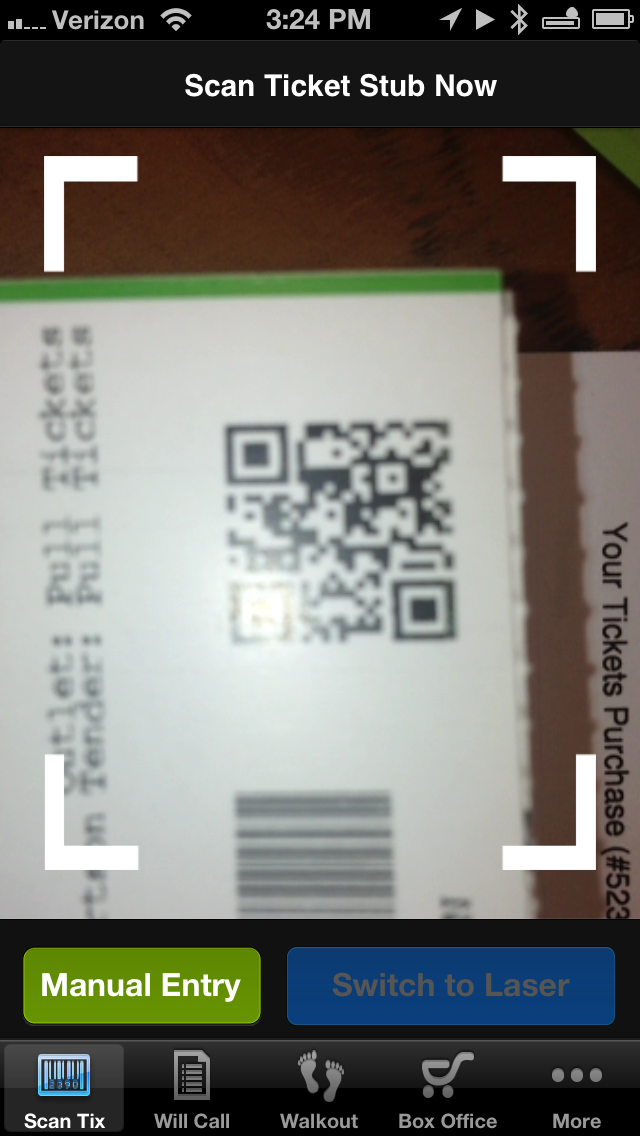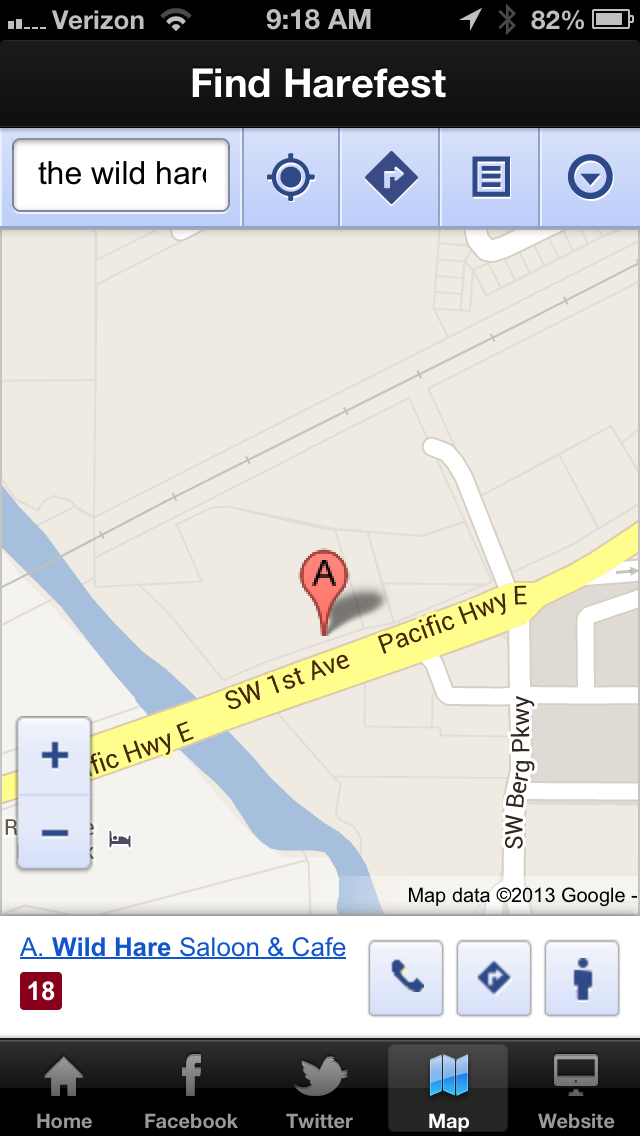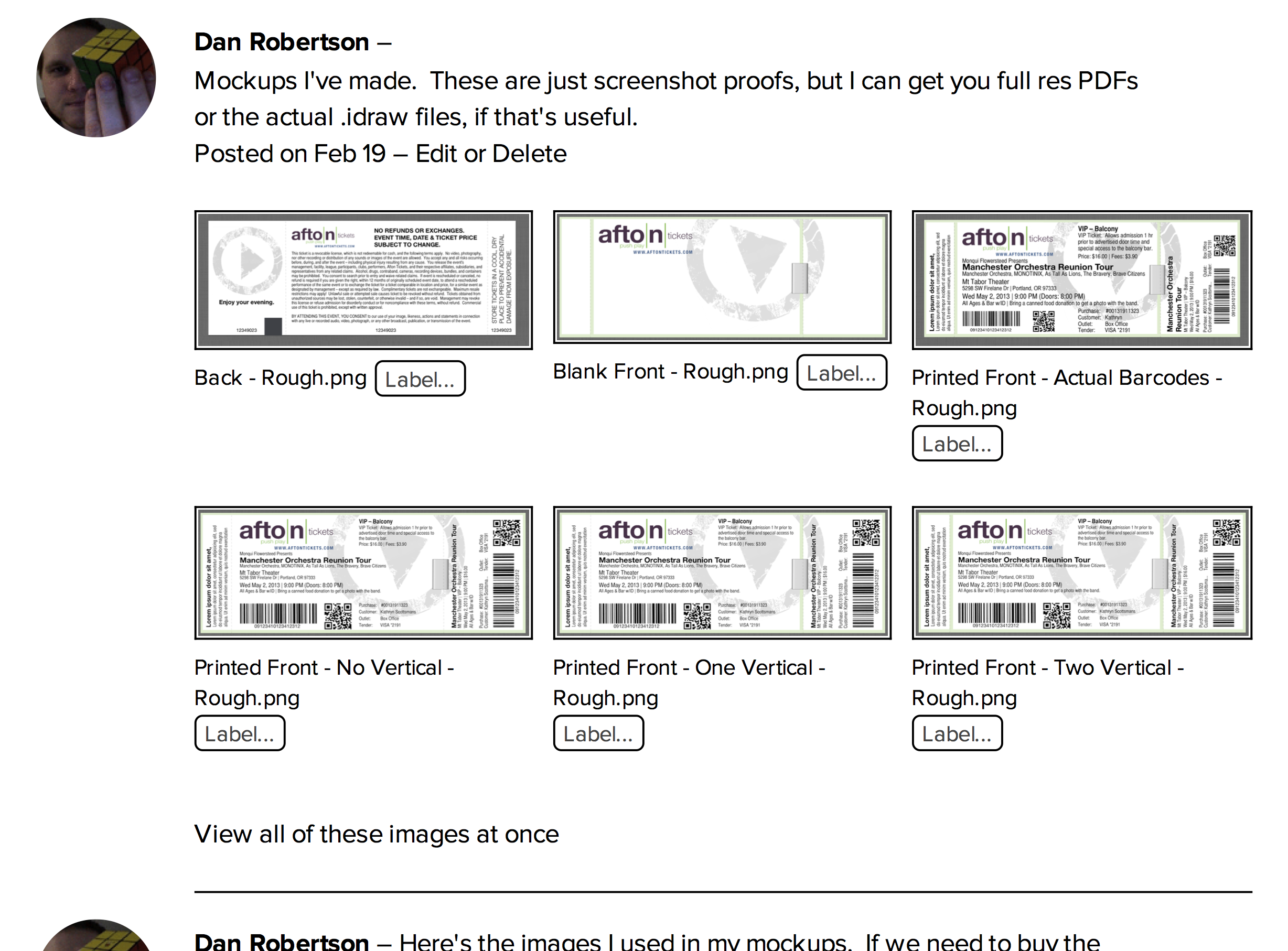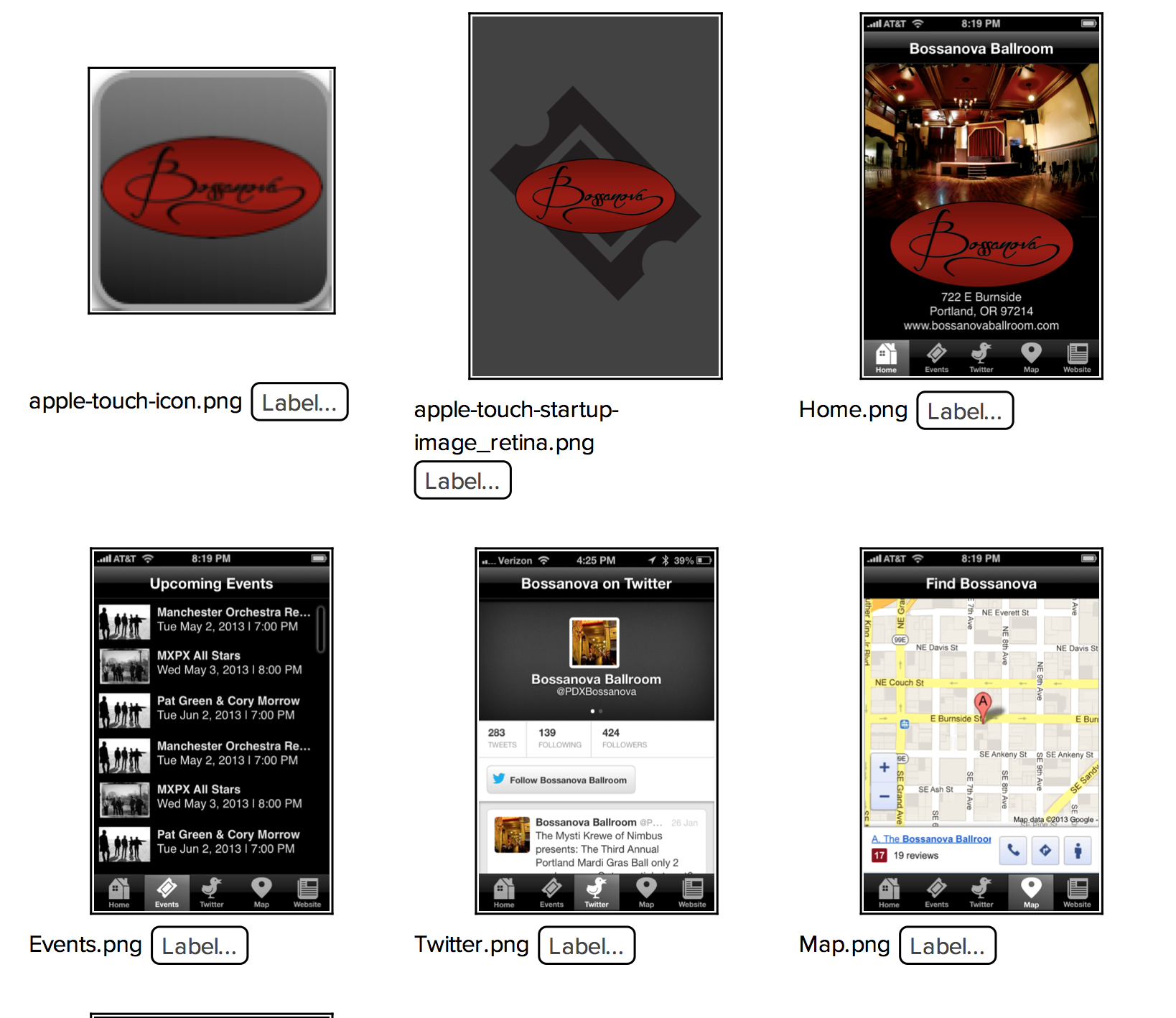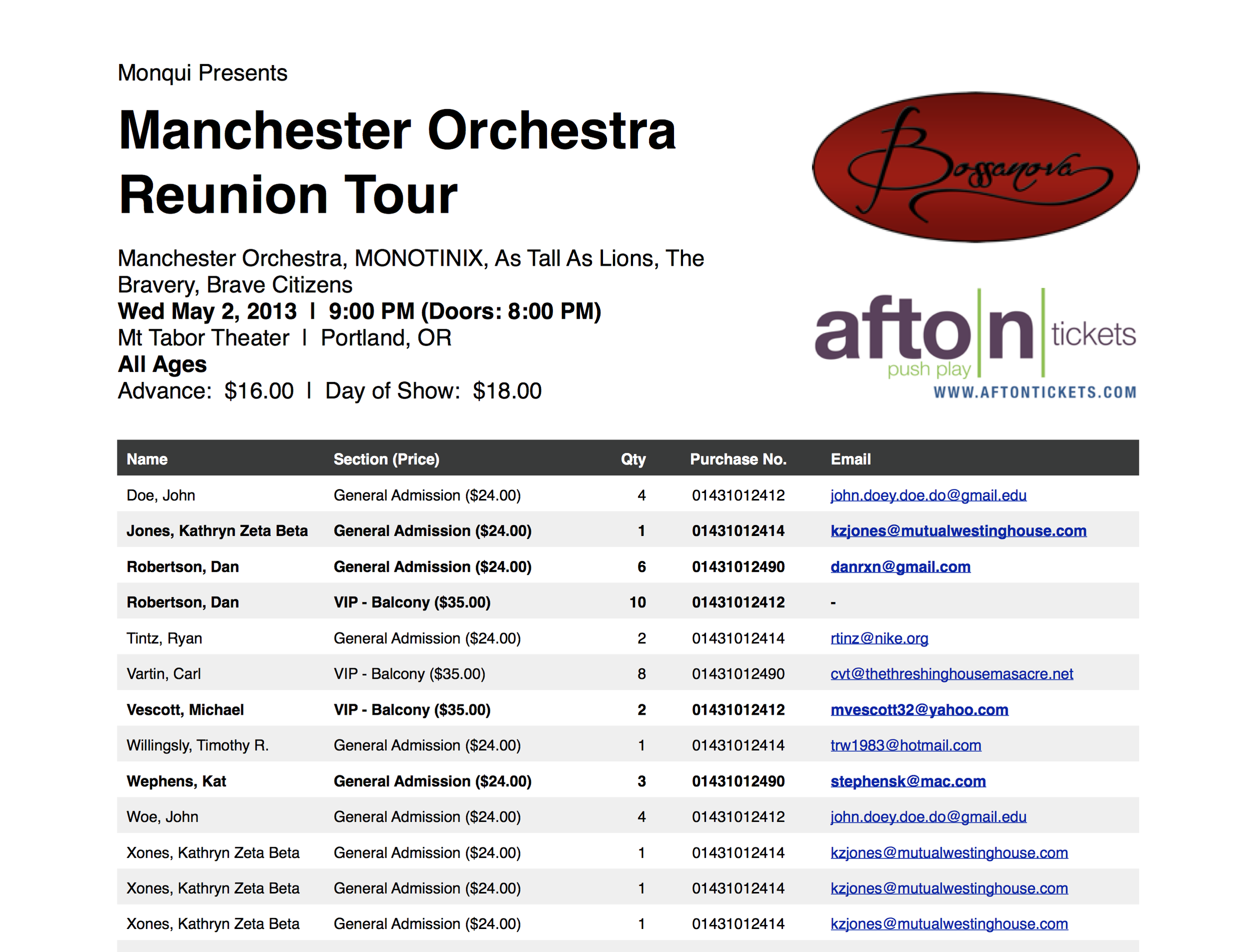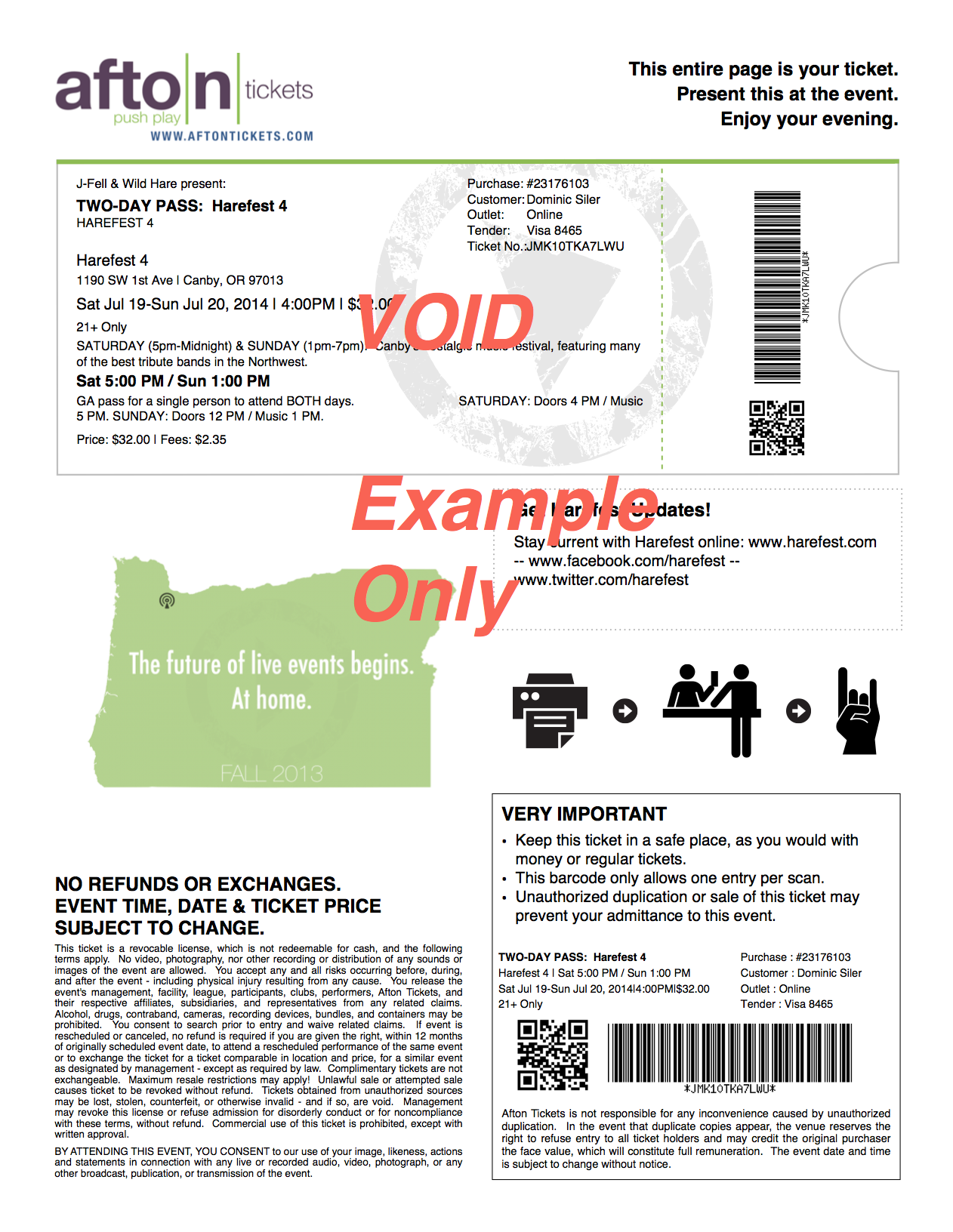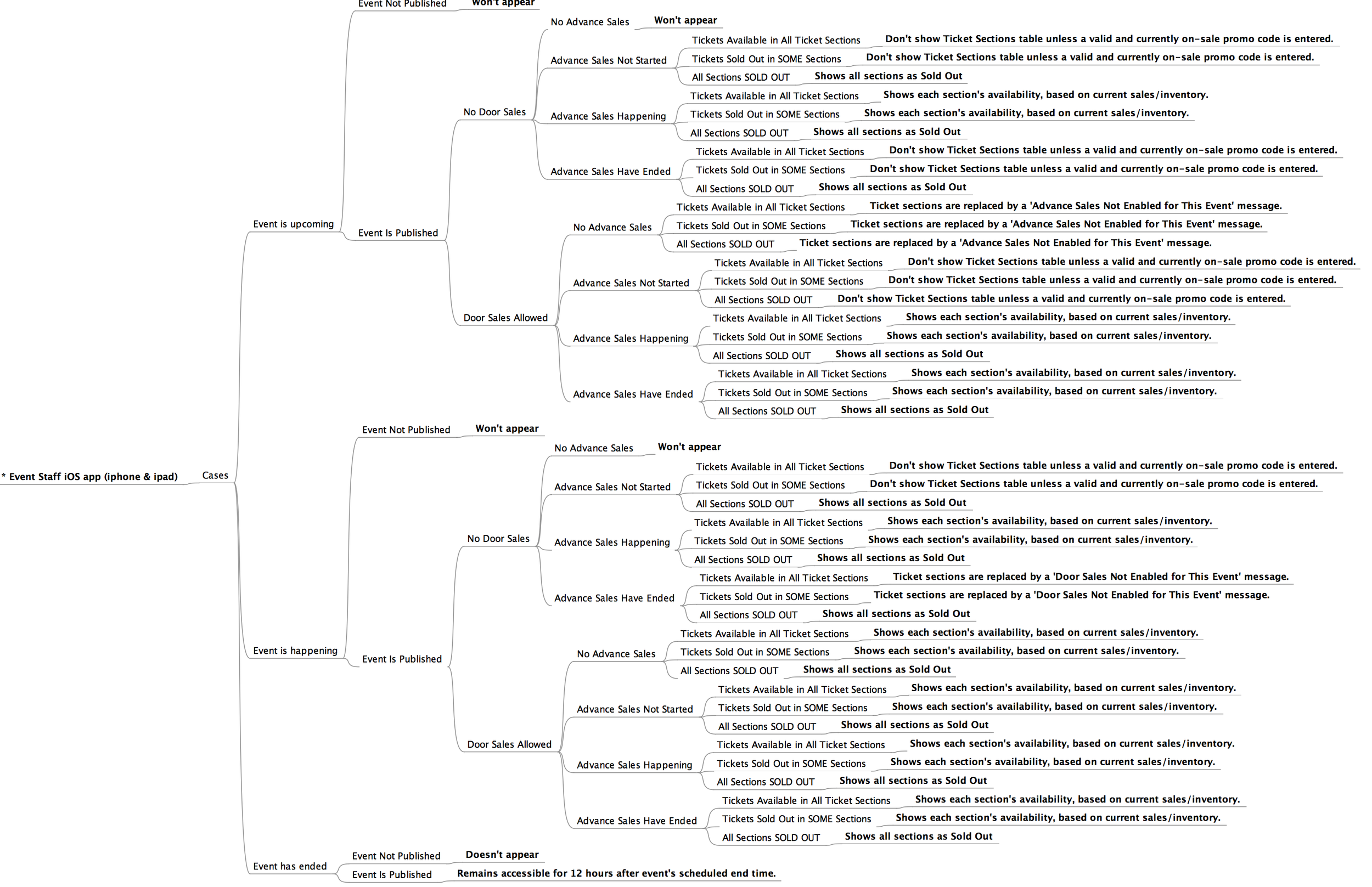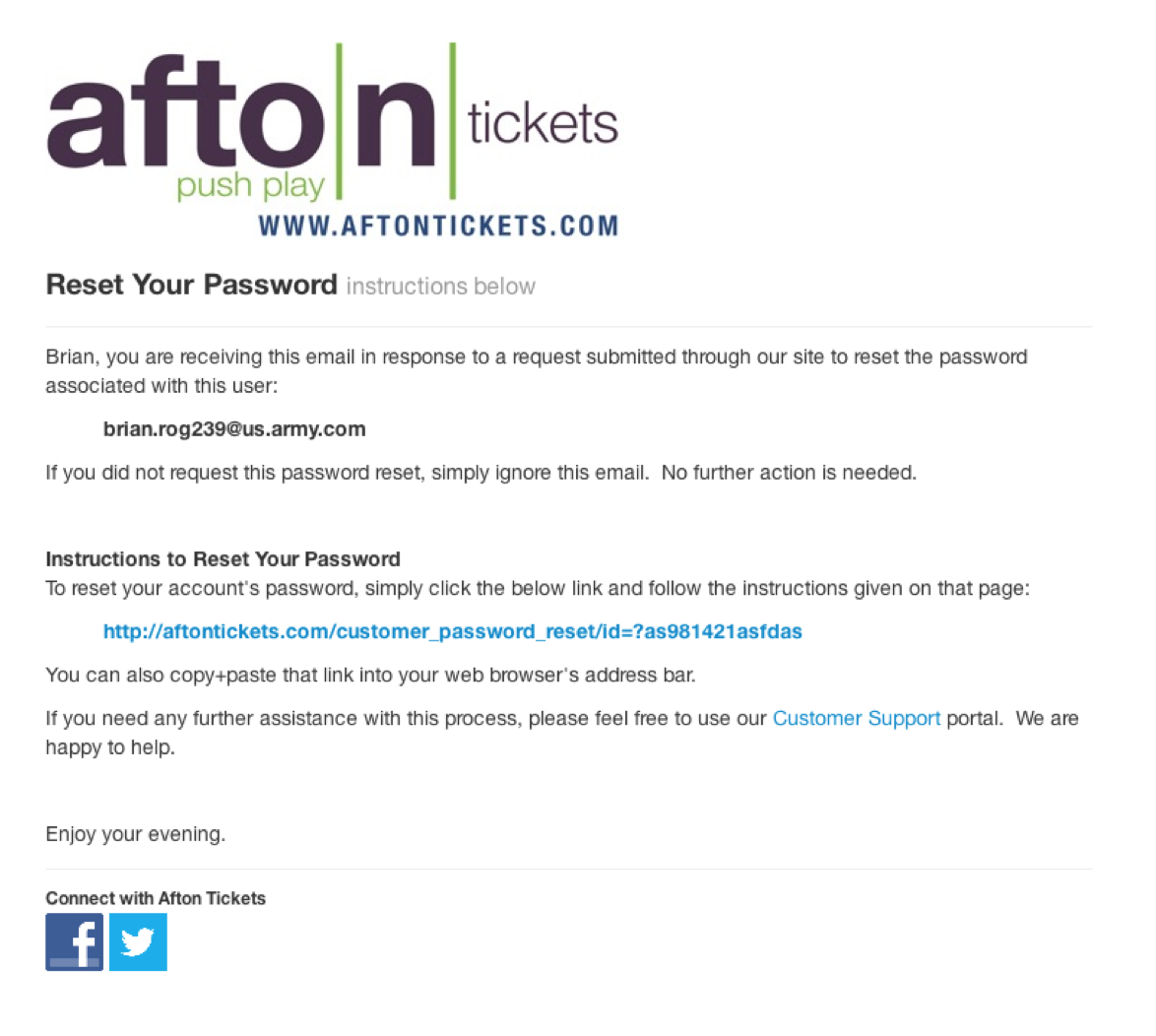Afton Tickets
Afton Tickets the largest product I have managed. This was the work I've enjoyed most in my career — partially because I love creating and largely because I love being stretched and learning. The Afton Tickets product offered opportunites to be creative and learn new skills/patterns/paradigms/principles, in spades.
My Role as Product Manager and Business Systems Analyst
My role as product manager (acting also as BSA) during initial and on-going development of the Afton Tickets product was to conceive of features, prune the list of possible features, prioritize features, document the full required functionality of the system — across various Web components, mobile applications, specialized OEM hardware, etc. I also selected all OEM hardware for aesthetics, price, features, and interoperatiblity.
I wrote no production code, nor front end markup for UI.
Development Areas
- Websites
- CMSs
- E-commerce
- Workflow automation
- Native iOS application for POS and handheld scanners
- Universal for use on iPhone, iPod touch, iPad
- Integration of hardware, software, database, etc (via iOS app)
- Integrated with OEM peripherals for card swiping and laser scanning (via hardware manufacturer's SDK)
- Integration with OEM thermal ticket printer via Bluetooth
- Integration with OEM cash drawer (pops automatically when change is needed, even while locked)
- Customer support process and infrastructure
- Selection, customization, and integration of 3rd party help desk platform
- Selection and integration of 3rd party phone system for inbound and outbound calling and voicemails
- Creation of knowledge base of support articles (indexed by title, text, and keyword) to present potential answers to support inquiries before customer finishes submitting the request
- Dynamically generated PDFs
- Transactional Emails
- Inventory management and security for tickets (1D/2D barcode creating and scanning)
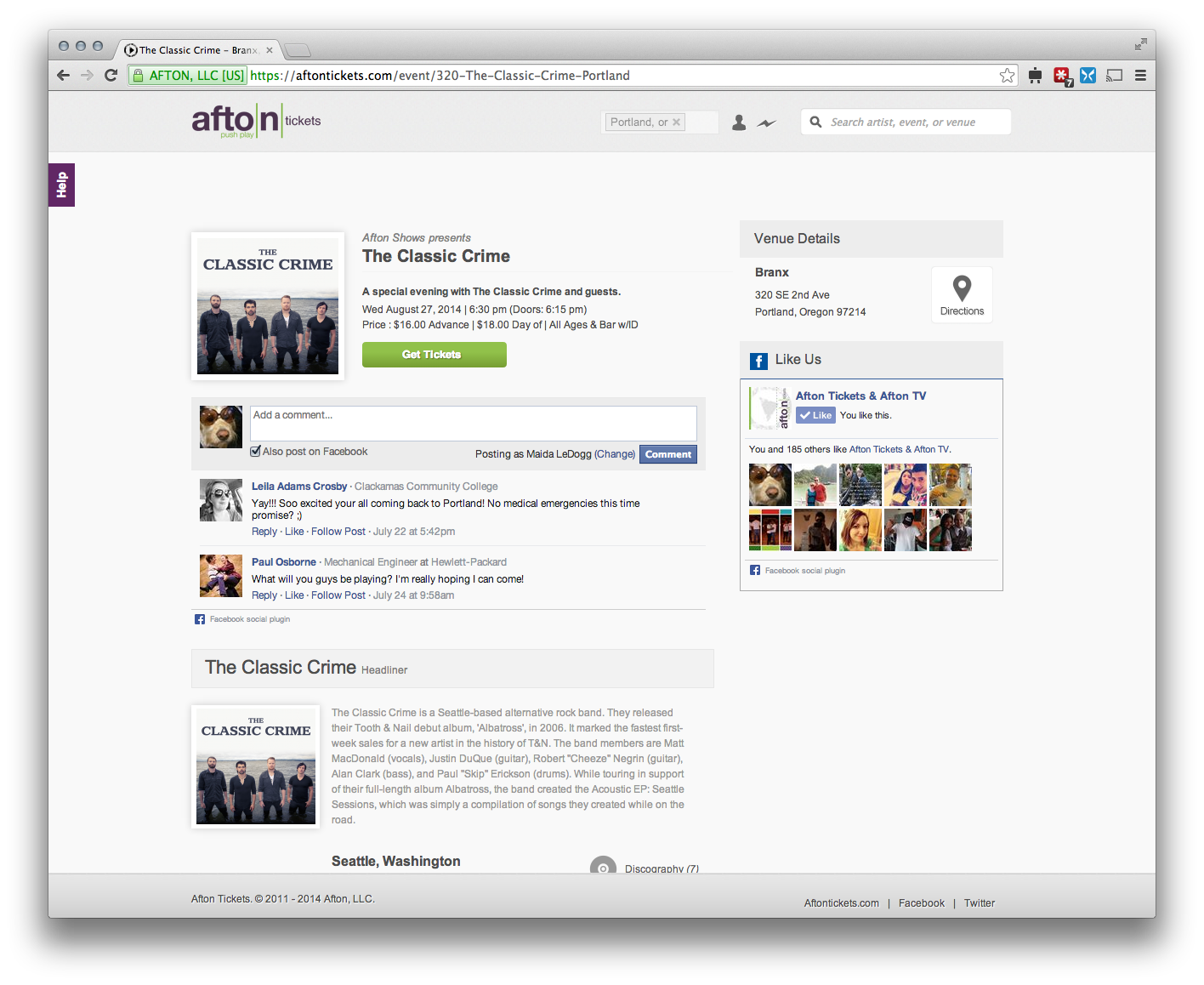
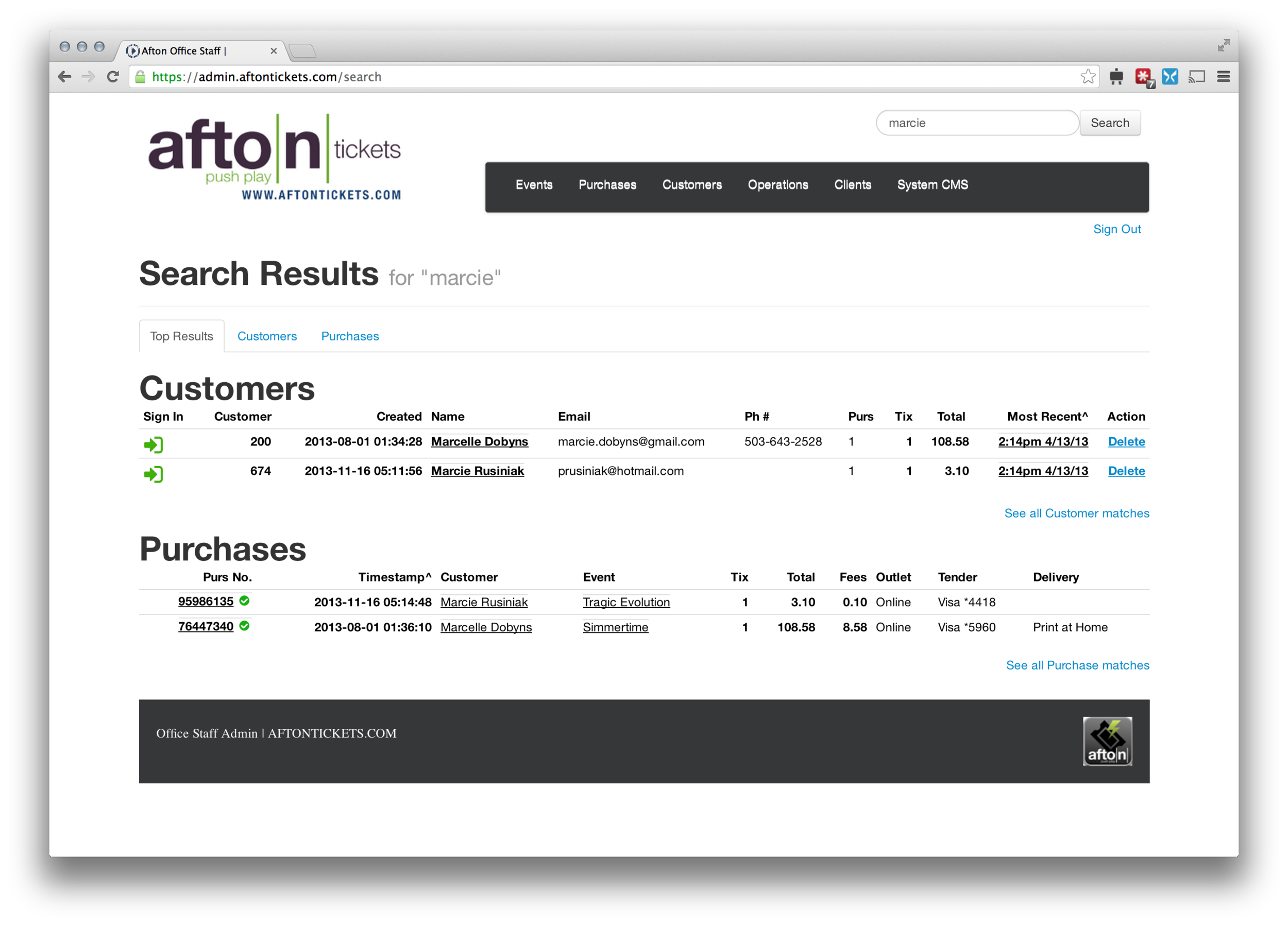
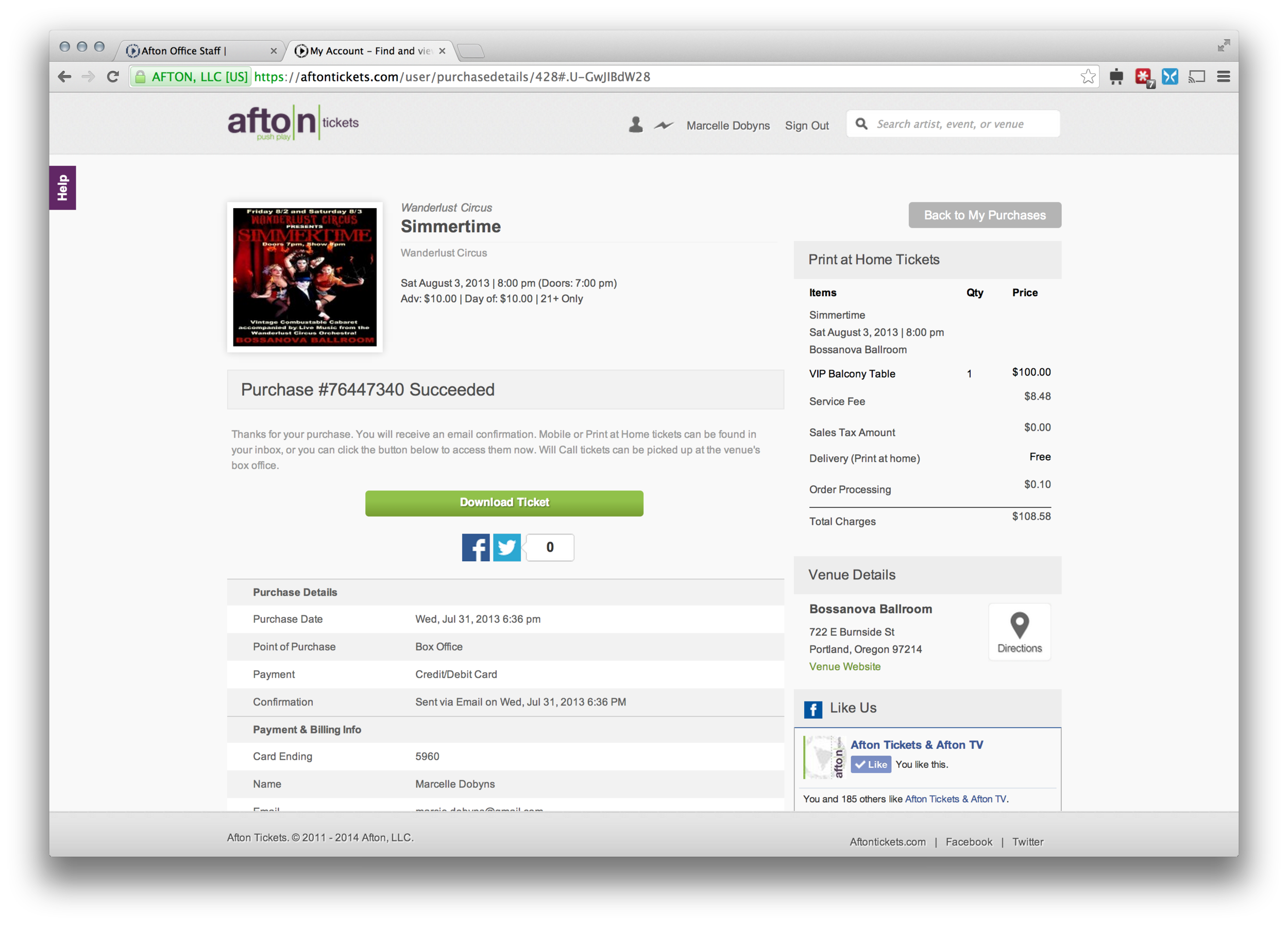
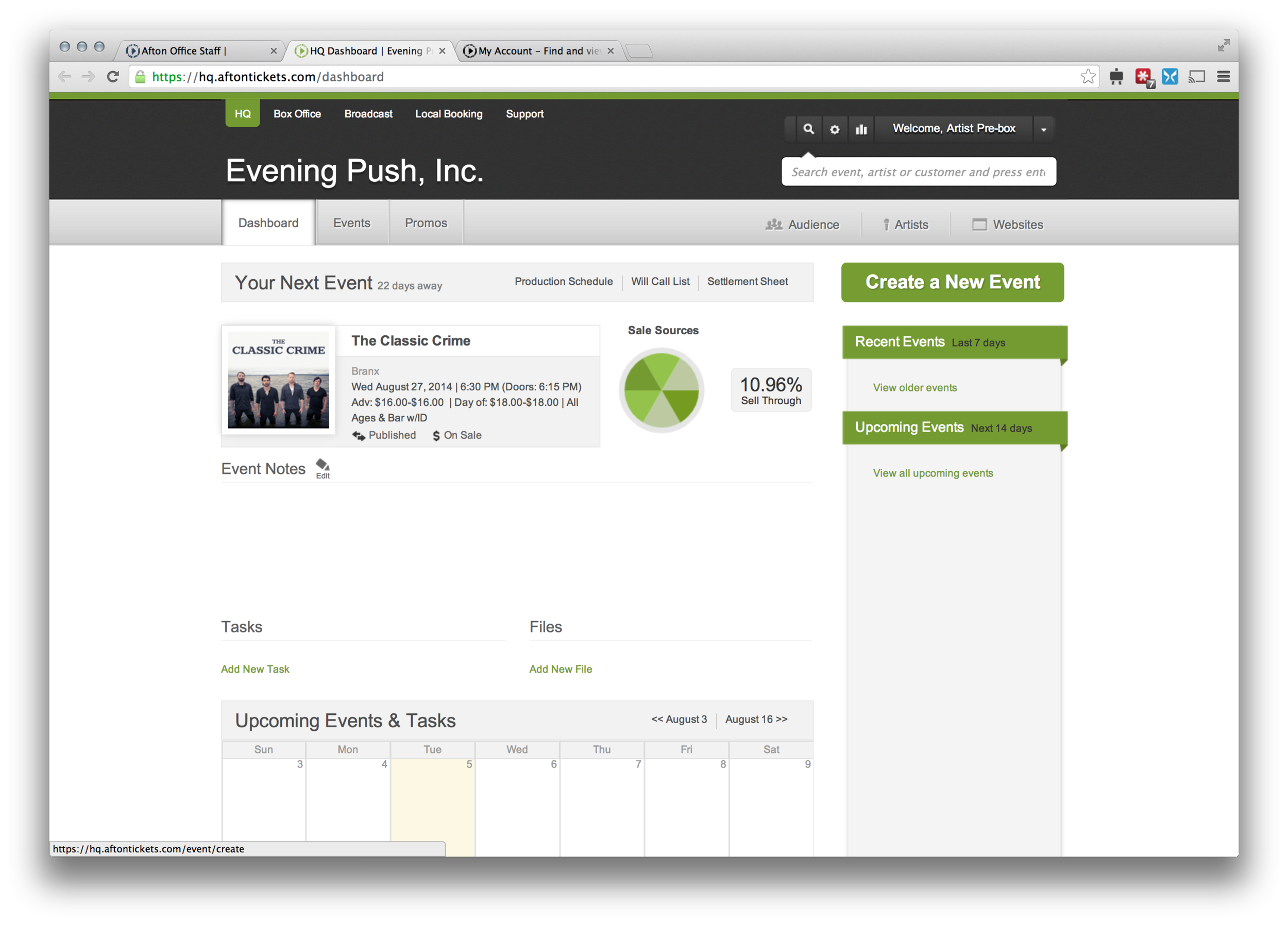
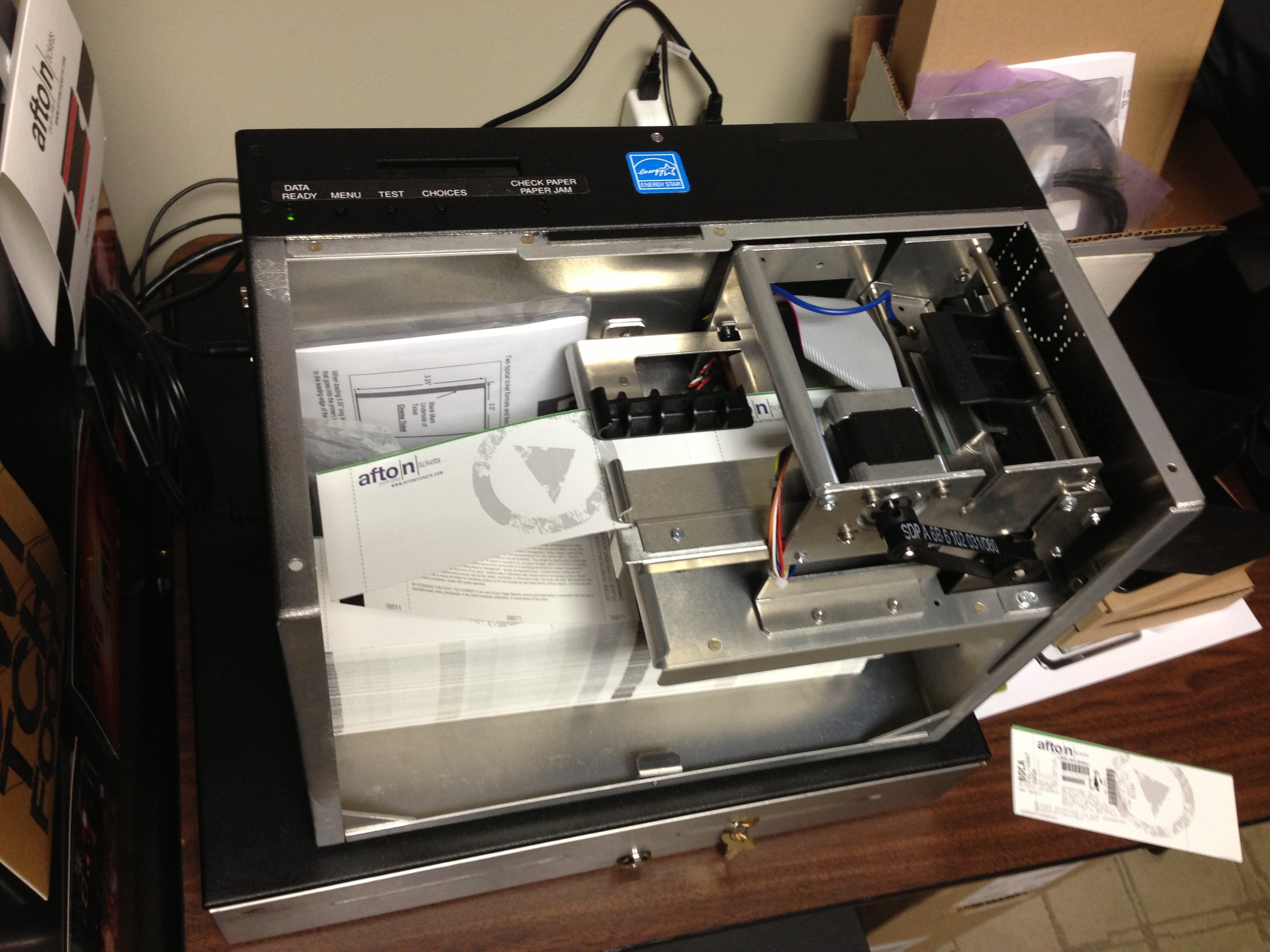
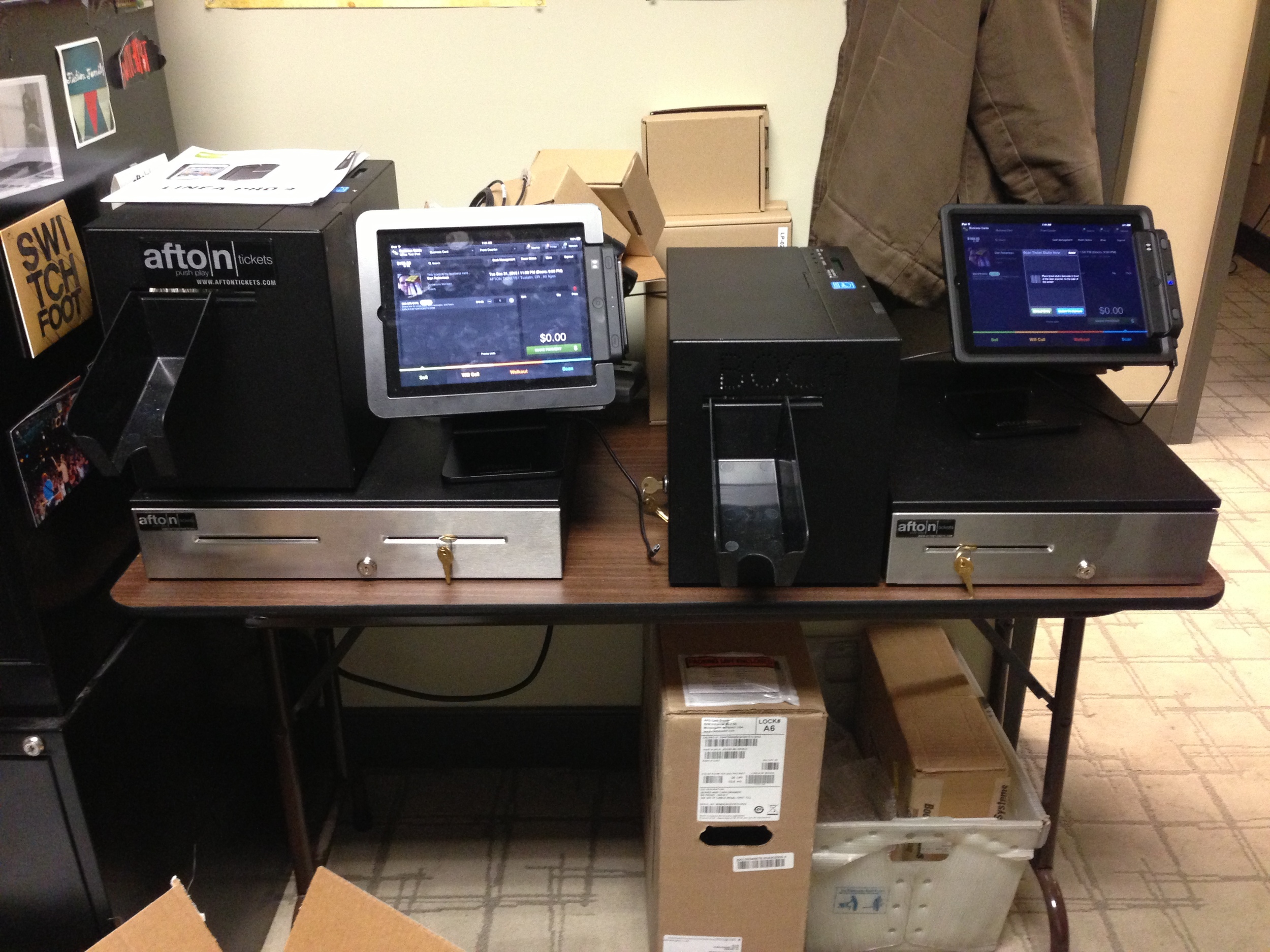
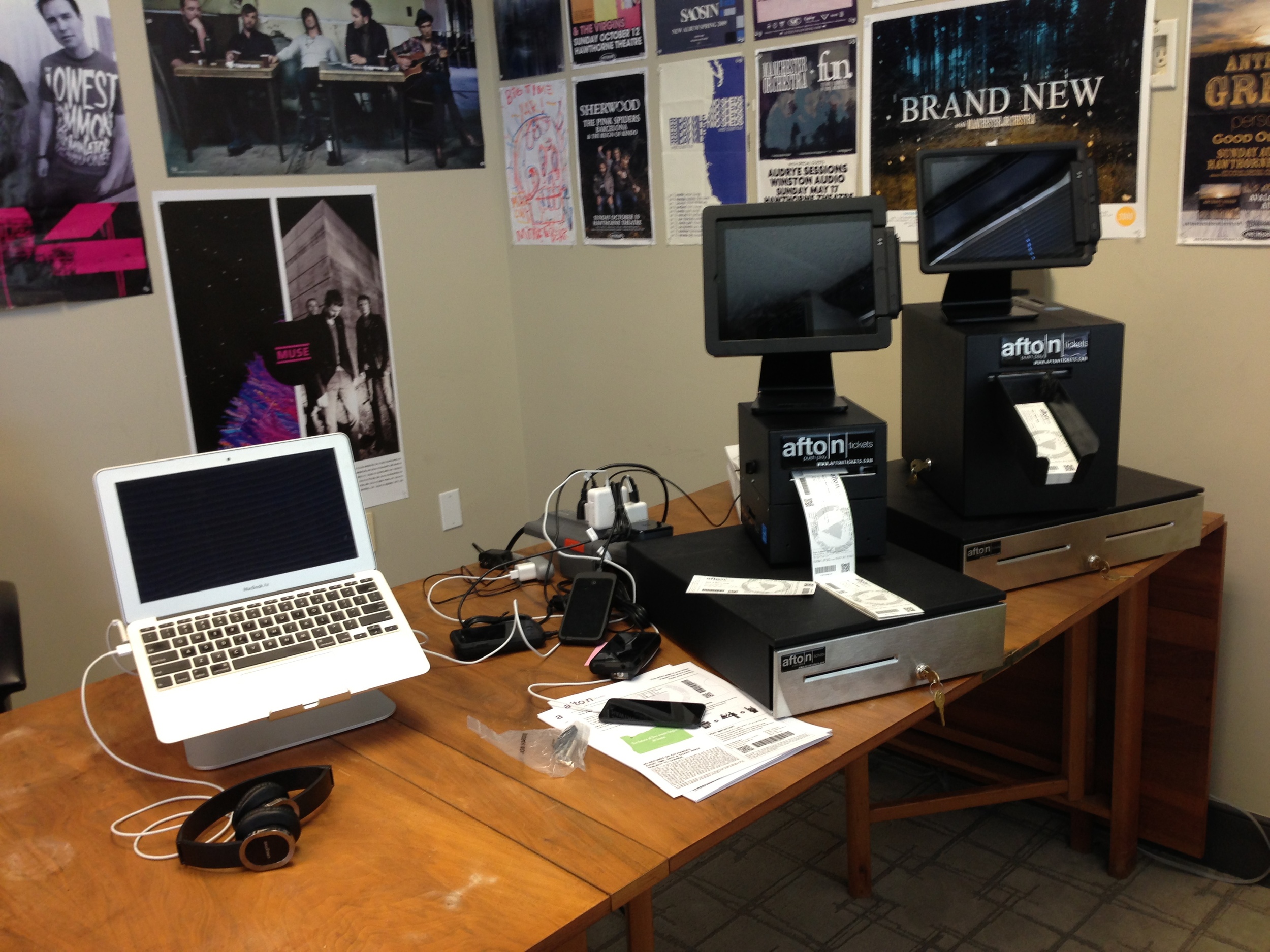
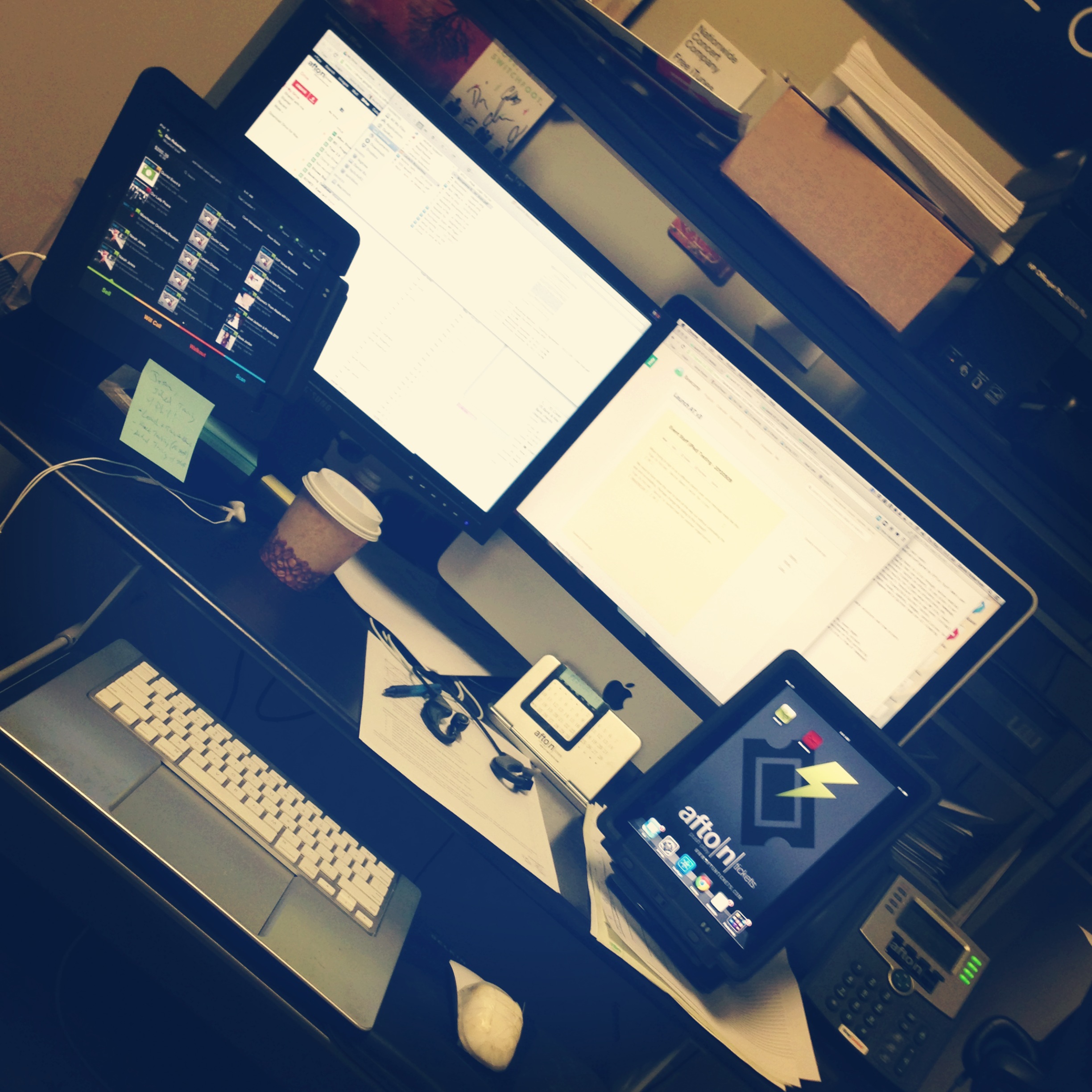
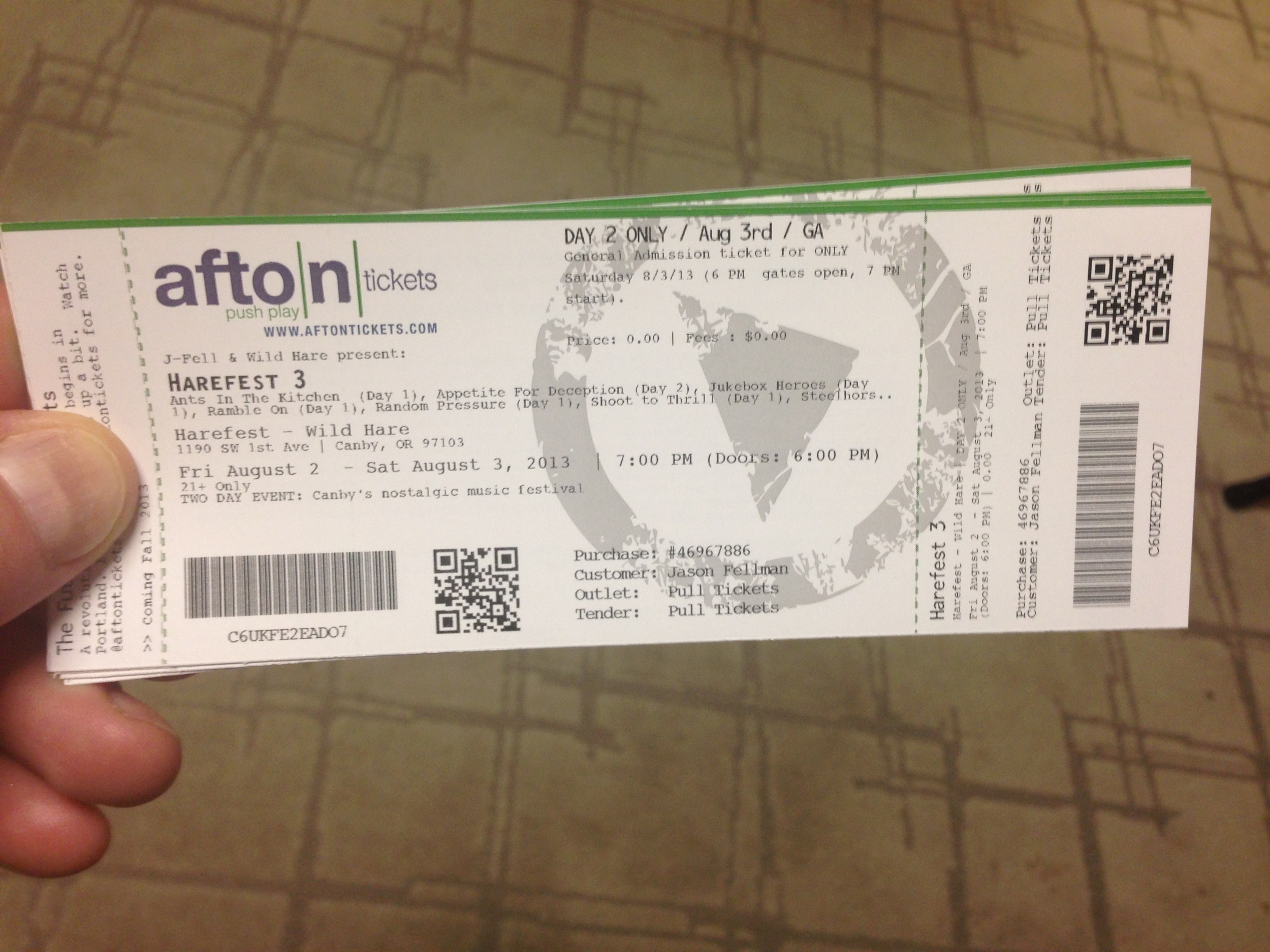

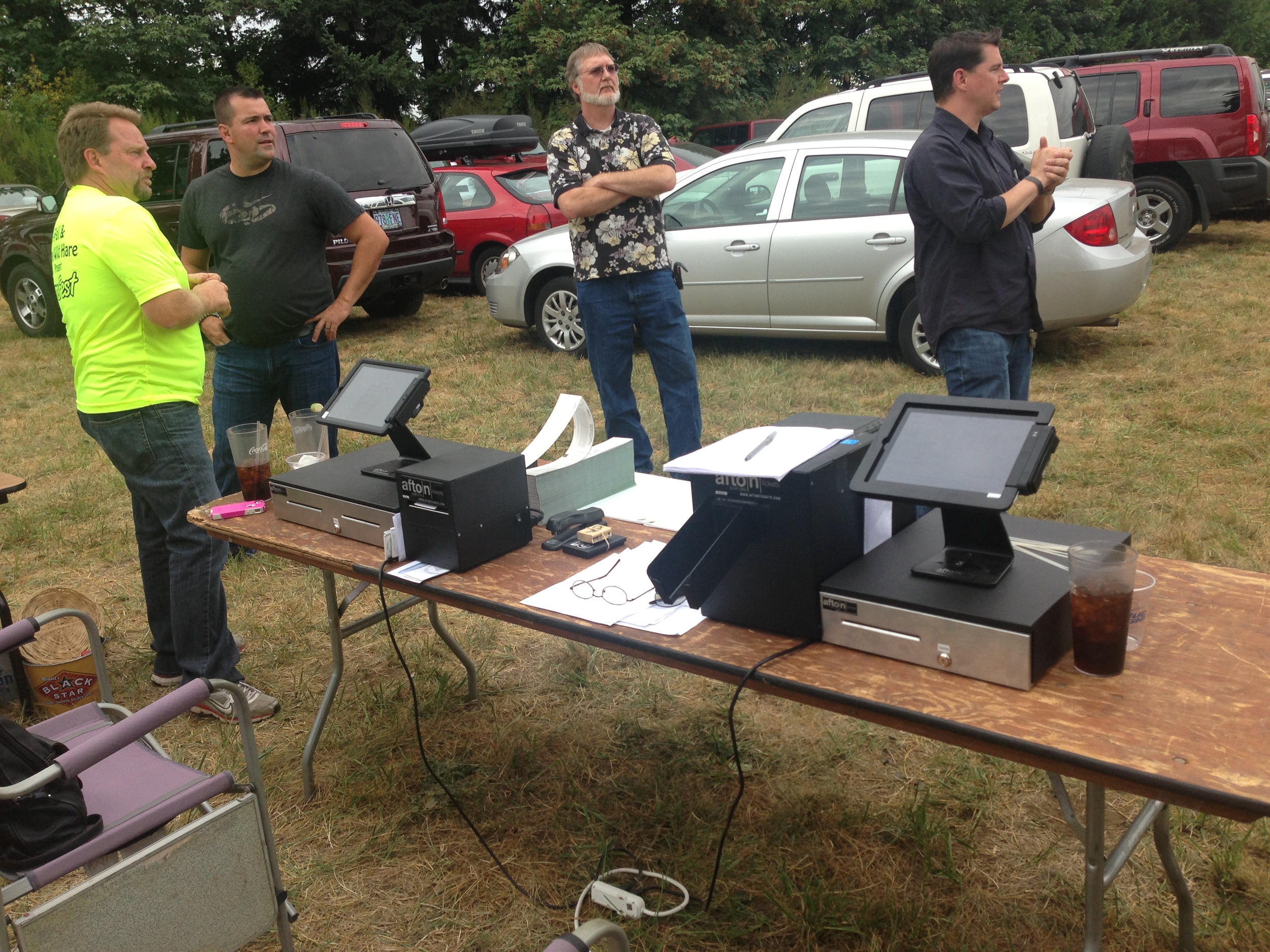
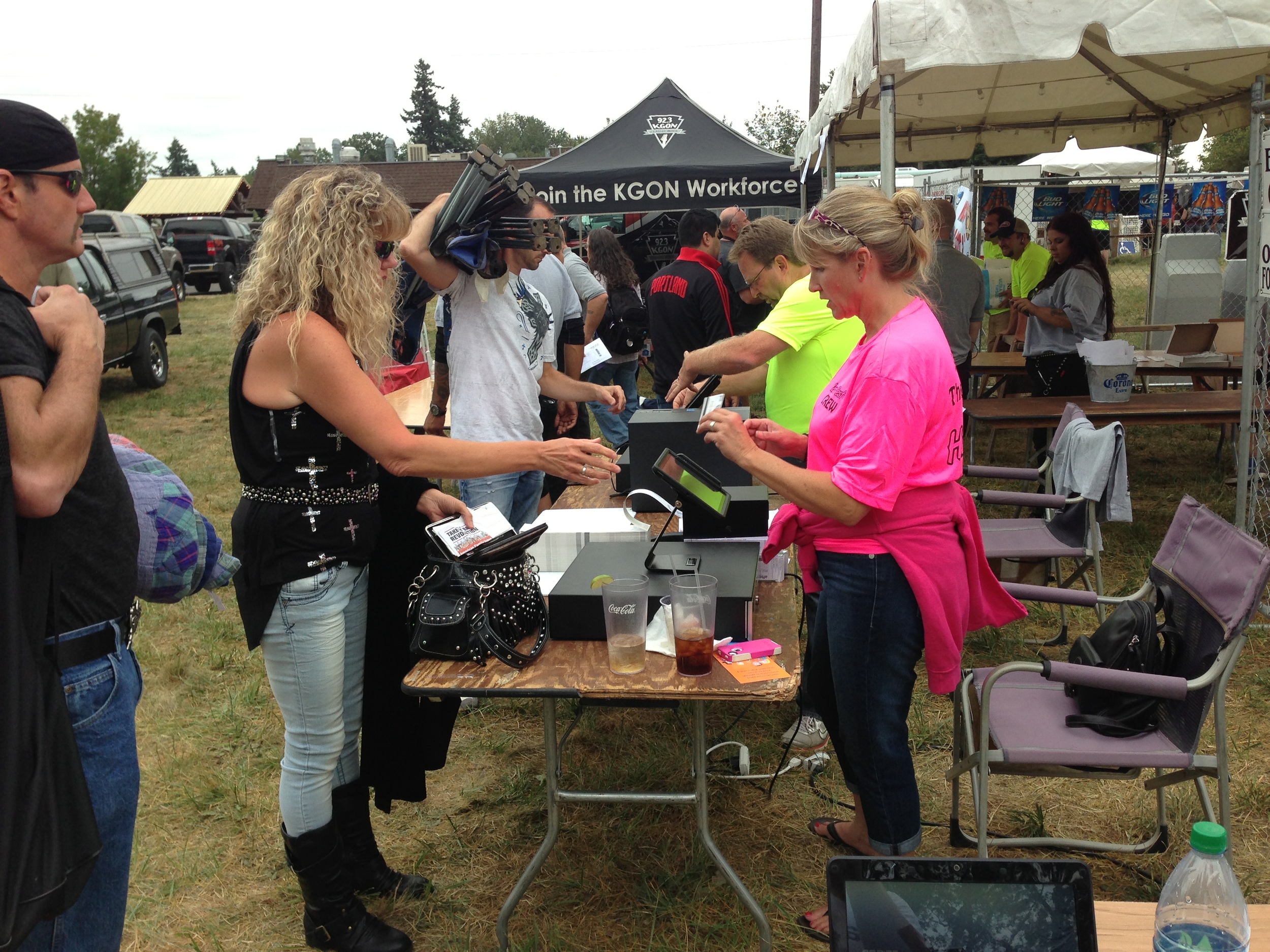
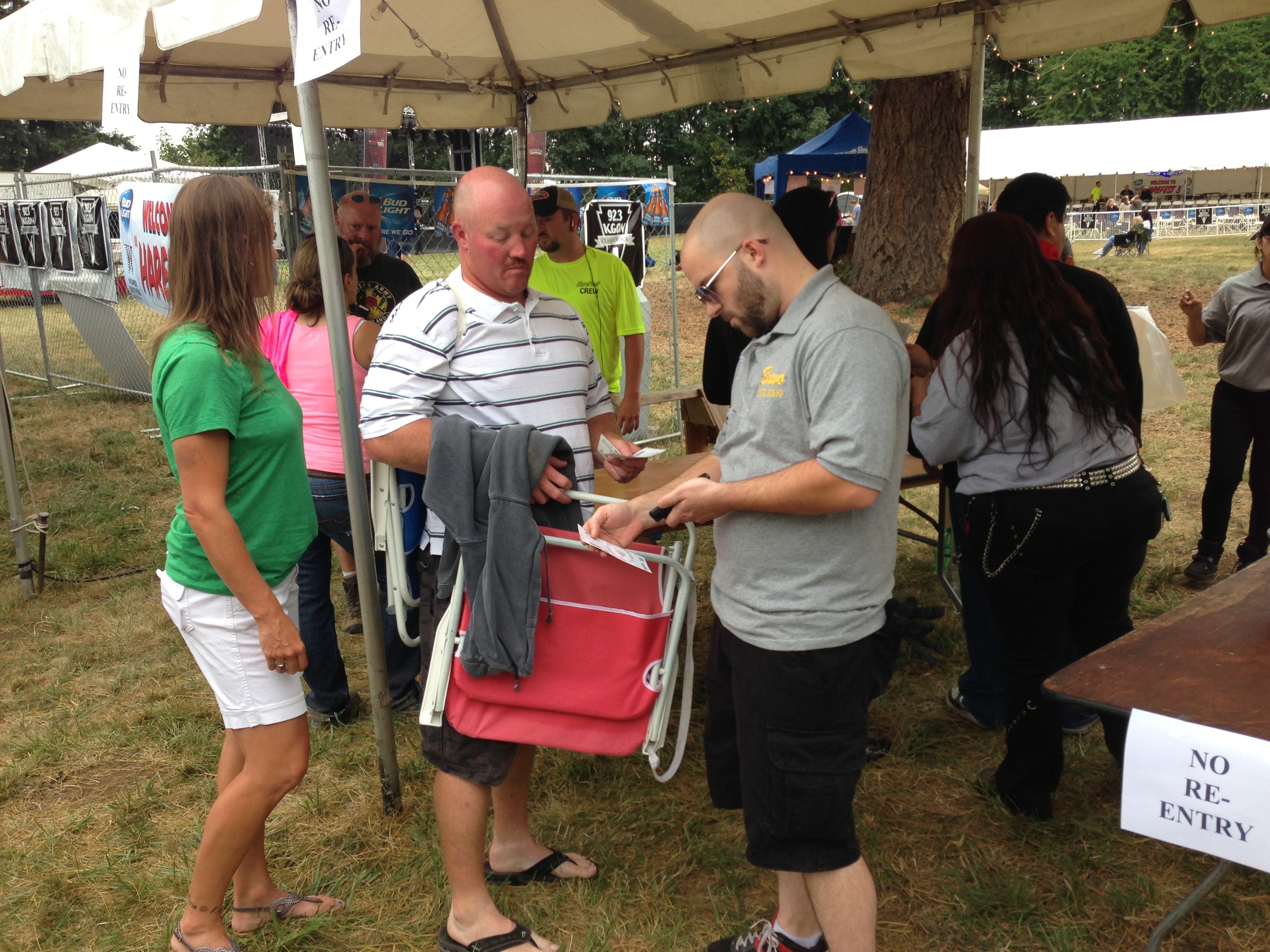
Afton Tickets is a platform for venues and live event organizers to sell tickets to their customers for admission. The product is really tools in one integrated system.
Types of Users
- Clients (venue managers)
- Customers (people buying event tickets, to attend)
- Office Staff Admin (backend user doing client support, customer support, and operations)
For the Web elements, I worked with a designer on a consultant basis to style the seminal screens used by the Client and the Customer. From there, I used rough wireframes to illustrate how the already-defined styles would be used in the remaining screens, to round out the needed functionality for those tools.
For the backend Admin tools, which would only be seen by people in my office, I used a baisc white Bootstrap template. This allowed me to mockup everything using Easel.io, where the output can actually be full markup. Not perfect or beautiful, but a huge benefit over a mockup done in a drawing or image editing app.
All that really matters is what the user sees and experiences, so my aim was to lean on wireframe mockups (which forced me to make important decisions early), rather than waste thousands of words describing how things should look and work. Once you see a finished screen where a new Venue is created, it makes it pretty obvious how that object should be modeled, etc. My goal was to pass our designers and programers full wireframes of every screen, in every state. I didn't quite get there, but I covered a lot of ground.
Product Manager and BSA Work Sample Documents
Here are links to PDF prints of full written specs for various pieces of this system, along with the correlated wireframes, mockups, document design templates, and supporting documentation. The following requirement docs were posted to a Basecamp project as the system was being designed and developed:
Here are some samples of the types of mockups and documents I used in the above-linked PDFs to suplement my written requirements specs.

